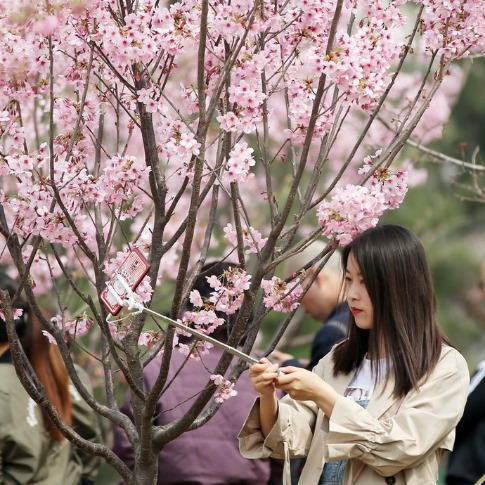
As we take our warm-weather clothes out of storage, nature is also shedding its winter coat and donning its spring finery. Ancient Chinese poets loved to extol(赞颂,zàn sòng) on the arrival of spring. Take the following Tang Dynasty poem, “Spring Dawn” (《春晓》) by Meng Haoran (孟浩然):

春眠不觉晓 (chūn mián bù jué xiǎo)
I wake up at the dawn of spring,
处处闻啼鸟 (chù chù wén tí niǎo)
And hear the birds everywhere sing.
夜来风雨声 (yè lái fēng yǔ shēng)
As sounded the wind and rain overnight,
花落知多少 (huā luò zhī duō shǎo)
I wonder how many blooms alight.
Most of the plant species in Beijing only bloom between late March and May, so now is the best time to break out of the daily grind(苦差,kǔ chāi) in search of nature. Besides the popular peach and cherry blossoms, you might find yourself surprised by the sheer diversity of Beijing’s flora. We spotlight eight plant species below, along with the best places to enjoy their beauty.
Cherry blossoms (樱花, yīng huā)
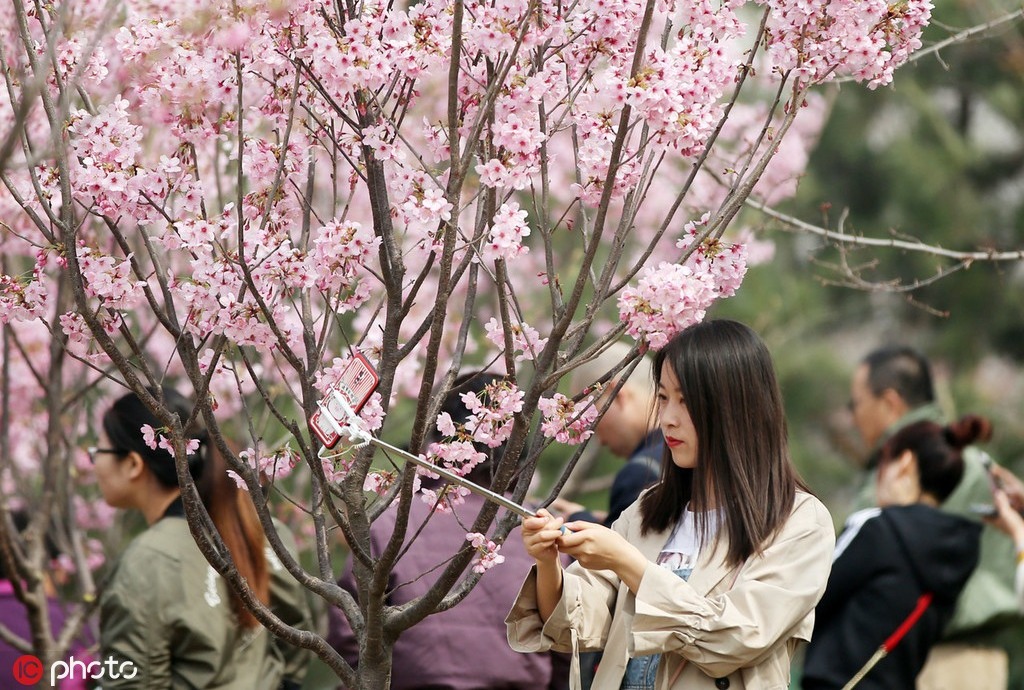
If you can’t make it to Japan for hanami, your second-best choice is Yuyuantan Park(玉渊潭公园) in Haidian District. You’ll find a sea of 2,000 pink, yellow, and white cherry trees in bloom(盛开,shèng kāi), most of which are diplomatic gifts(外交礼物,wài jiāo lǐ wù) from Japan. Best times to visit: Late March to mid-April.
RMB 10. Daily 6 am-8.30 pm. Yuyuantan Park, 10 Xisanhuan Zhonglu, Haidian District (8865 3800)
海淀区西三环中路10号玉渊潭公园
Peach blossoms (桃花, táo huā)
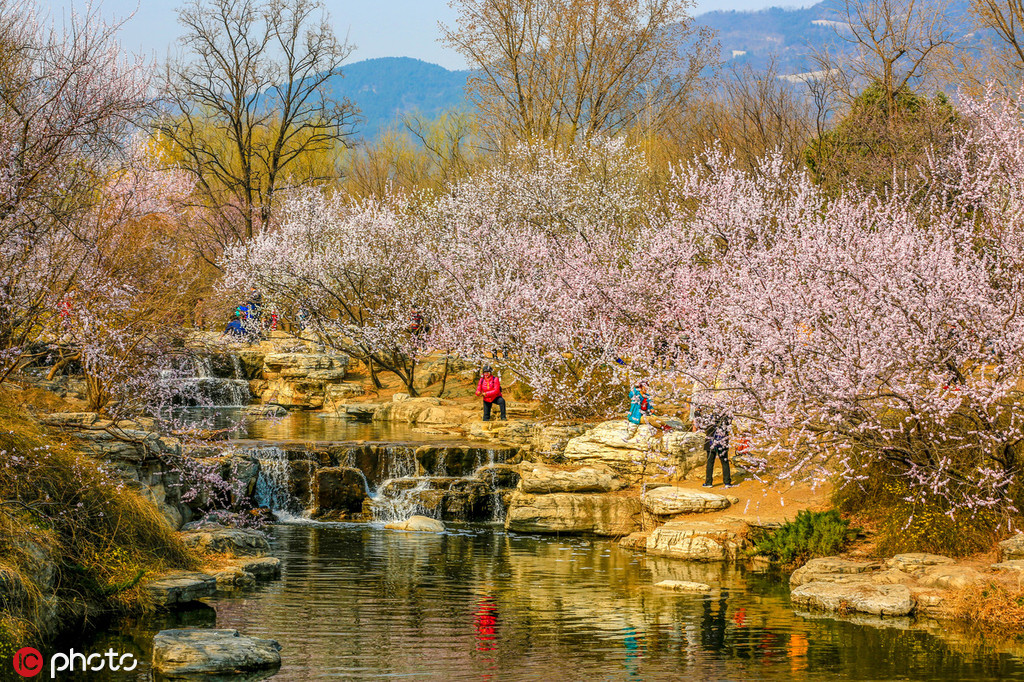
Did you know that Beijing Botanical Garden(北京植物园) has the largest peach garden in the city? Get up early and lose yourself among the thousands of peach trees before the masses descend on the place. Best times to visit: Early April to early May.
RMB 10. Daily 7 am-5 pm. Beijing Botanical Garden, Xiangshan Nanlu, Haidian District (8259 8771)
海淀区香山南路北京植物园
Apricot blossoms (杏花, xìng huā)
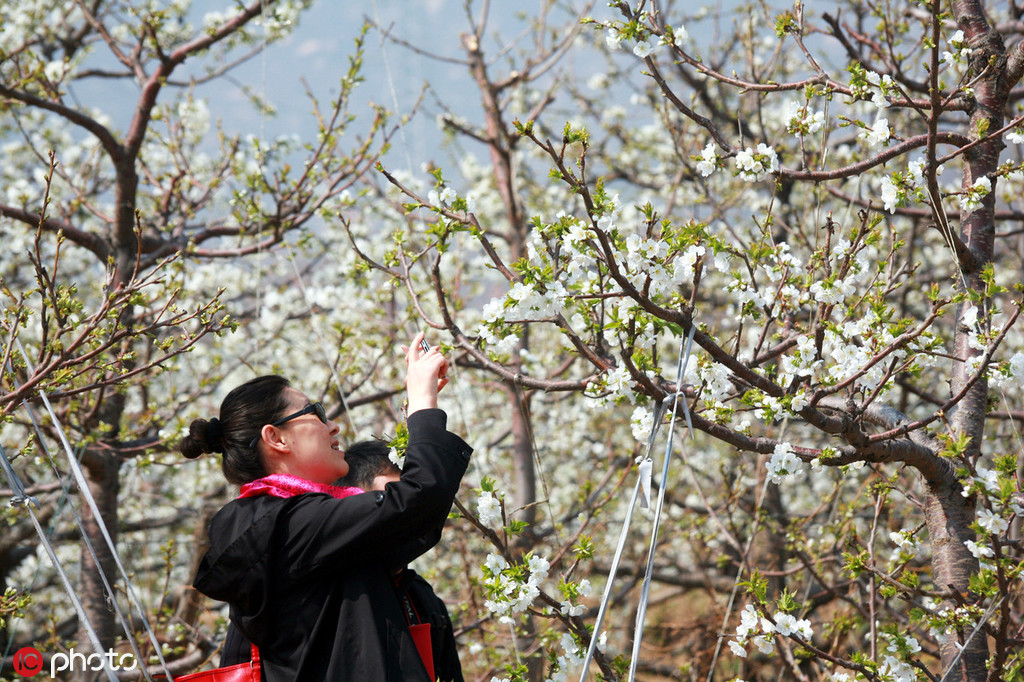
Every spring, visitors flood into Fenghuangling Nature Park(凤凰岭自然风景公园) to see apricot buds burst into a sea of pink flowers(粉色花海,fěn sè huā hǎi). Apricot trees cover approximately 400,000 sqm of the park; families can also enjoy hiking the green hills(爬山,pá shān) and exploring thick forests. Best times to visit: Early to mid-April.
RMB 25. Daily 6.30 am-5.30 pm. Fenghuangling Nature Park, 19 Fenghuangling Lu, Sujiatuo Town, Haidian District (6245 5933)
海淀区苏家坨镇凤凰岭路19号凤凰岭自然风景公园
Tulips (郁金香, yù jīn xiāng)
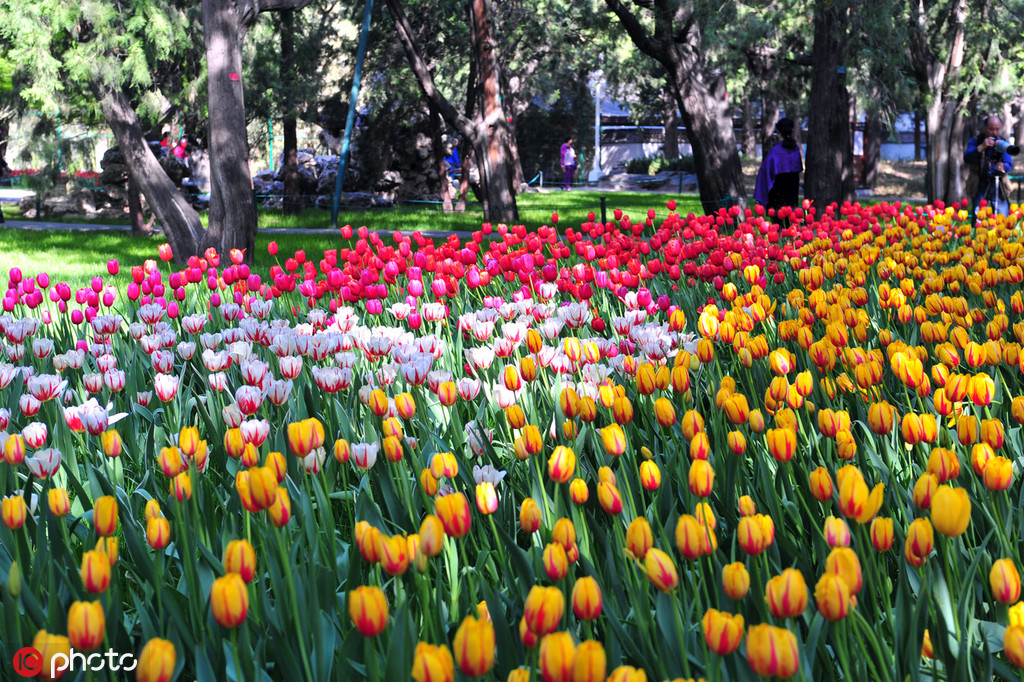
Located just west of Tian’anmen square(天安门广场), Zhongshan Park(中山公园) is the only place in Beijing where you’ll find an abundance of tulips. The bulbs were gifted to China from Holland(荷兰)in the 1970s. Best times to visit: Mid-April to mid-May.
RMB 3. Daily 6 am-8 pm. Zhongshan Park, 4 Zhonghua Lu, Dongcheng District (6605 5431)
东城区中华路4号(天安门西侧)中山公园
Pear blossoms (梨花, lí huā)

The most beautiful flowers are often the most fleeting(短暂的,duǎn zàn de). Despite the Chinese affinity for pear blossoms, they seem to flower overnight, only to be washed away by the rain. Though better-known for the quality of its watermelons(西瓜,xī guā), Daxing District also has a Lihua Village(梨花村) with more than 30,000 pear trees. Make a weekend of it by staying at one of the many guesthouses(旅馆,lǚ guǎn) there; there are also shops and restaurants. Best times to visit: Mid-April.
Lihua Village, Panggezhuang Town, Daxing District (8928 8545)
大兴区庞各庄镇梨花村
Crabapple blossoms (海棠花, hǎi táng huā)

Crabapple trees bloom later than peach and cherry trees and the flowering season lasts longer. Every April, more than 3,000 crabapple trees bring crowds to Yuan Dynasty City Wall Relics Park(元大都城垣遗址公园), a normally quiet retreat that runs along a canal(运河,yùn hé) on the border of Haidian and Chaoyang. Best times to visit: Early April to May
Free. Daily 24 hours. 24 Anwai Xiaoguanjie, Chaoyang District (8464 8252)
朝阳区安外小关街24号元大都城垣遗址公园
Magnolias (玉兰花, yù lán huā)
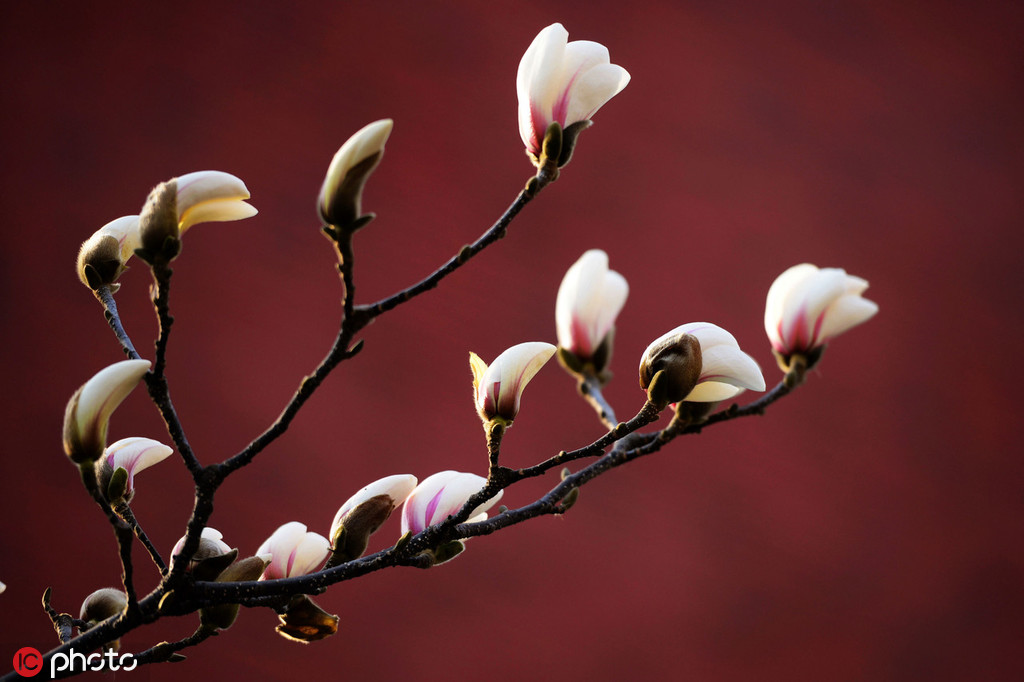
The long-lived magnolia tree was favored by Chinese emperors and produces large, fragrant flowers. The magnolia trees at Tanzhe Temple(潭柘寺) are the most famous. The white and lilac blossoms are made even more enjoyable by the tranquility(宁静,níng jìng) of the surroundings. Best times to visit: April and May.
RMB 55. Daily 8 am-4.30 pm. Tanzhe Temple, Tanzhe Shanlu, Mentougou District (6086 1699)
门头沟区潭柘山麓潭柘寺
Peony (牡丹花, mǔ dān huā)

Formerly grown only for the emperor, the peony is the floral emblem of China(国花,guó huā) and is associated with fortune, prosperity, and nobility. The “king of flowers(花中之王,huā zhōng zhī wáng)” produces massive, heavy blooms that range from fuschia to pure white, canary yellow, and cotton candy pink. To get a close look at these revered flowers, you can head to Jingshan Park(景山公园) just north of the Palace Museum(故宫). Best times to visit: Mid April to late May.
RMB 5 during peony season. Daily 6 am-8.30 pm. Jingshan Park, 44 Jingshan Xijie, Xicheng district (6404 4071)
西城区景山西街景山公园
Source: The Beijinger
If you have any problems with this article, please contact us at app@chinadaily.com.cn and we'll immediately get back to you.